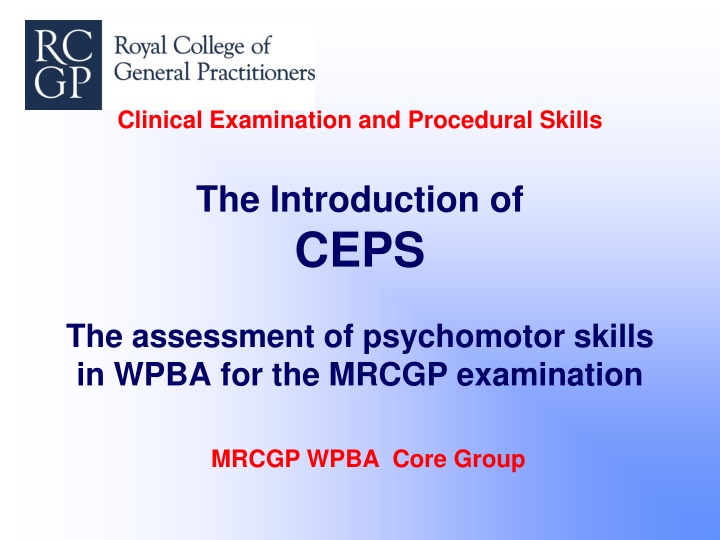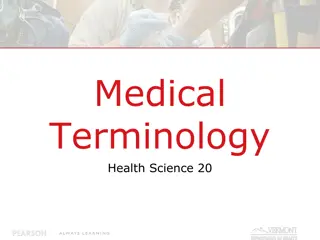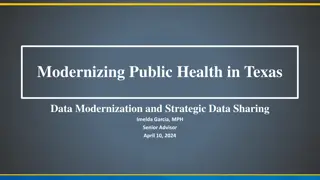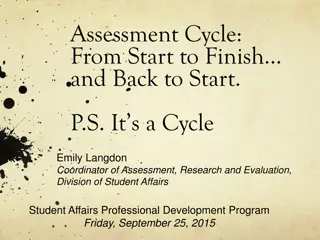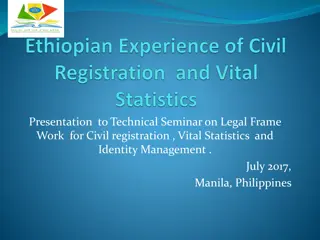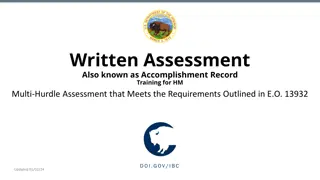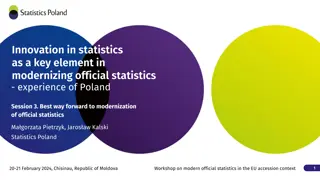Modernizing Assessment Methods in Medical Training
This content discusses the transition from mandatory DOPS assessments to Integrated DOPS within the framework of the Trainee ePortfolio for the MRCGP examination. It introduces a new competency called Clinical Examination and Procedural Skills (CEPS) and outlines the changes in assessment methods, recording procedures, and competencies expected from trainees. The content emphasizes the importance of psychomotor skills assessment and the integration of competencies with existing frameworks for a more comprehensive evaluation of trainees' clinical skills.
Download Presentation

Please find below an Image/Link to download the presentation.
The content on the website is provided AS IS for your information and personal use only. It may not be sold, licensed, or shared on other websites without obtaining consent from the author.If you encounter any issues during the download, it is possible that the publisher has removed the file from their server.
You are allowed to download the files provided on this website for personal or commercial use, subject to the condition that they are used lawfully. All files are the property of their respective owners.
The content on the website is provided AS IS for your information and personal use only. It may not be sold, licensed, or shared on other websites without obtaining consent from the author.
E N D
Presentation Transcript
Clinical Examination and Procedural Skills The Introduction of CEPS The assessment of psychomotor skills in WPBA for the MRCGP examination MRCGP WPBA Core Group
Integrated DOPS The proposal for change from mandatory to Integrated DOPS : 1. The assessment of DOPS will no longer be recorded as a single test on a mandatory list. 2. DOPS will be integrated within the existing framework of the Trainee ePortfolio and become Clinical Examination and Procedural skills (CEPS).
Recording Integrated DOPS in the ePortfolio 1. New professional competence also called Clinical Examination and Procedural Skills 2. New Learning Log category called Clinical Examination and Procedural Skills 3. Included as part of the COT (criterion 6) 4. Specifically addressed by 3 questions for the ES as a summary of progress in the ESR. 5. Changes to MSF 6. Changes to CSR 7. New evidence form for assessor to document observations
1. New professional competence also called Clinical Examination and Procedural Skills Clinical Examination and Procedural Skills becomes a new and additional competency to be completed by trainees in the same manner as the current twelve competencies.
New Competence: Clinical Examination and Procedural Skills 13 Clinical Examination and Procedural Skills Insufficient Evidence Needs Further Development Competent Excellent Chooses examinations broadly in line with the patient s problem(s) Chooses examinations appropriately targeted to the patient s problem(s) Proficiently identifies and performs the scope of examination necessary to investigate the patient s problem(s) Uses an incremental approach to examination, basing further examinations on what is known already and is later discovered Identifies abnormal signs but fails to recognise their significance Has a systematic approach to clinical examination and able to interpret physical signs accurately Suggests appropriate procedures related to the patient s problem(s) Varies options of procedures according to circumstances and the preferences of the patient Demonstrates a wide range of procedural skills to a high standard From the available evidence, the doctor s performance cannot be assessed. [placed on a higher point of this developmental scale] Demonstrates limited fine motor skills when carrying out simple preocedures Observes the professional codes of practice including the use of chaperones Refers on appropriately when a procedure is outside their level of skill Identifies and discusses ethical issues with regard to examination and procedural skills Actively promotes safe practice with regard to examination and procedural skills Engages with audit quality improvement initiatives with regard to examination and procedural skills Helps to develop systems that reduce risk in clinical examination and procedural skills Performs procedures and examinations with the patient s consent and with a clinically justifiable reason to do so Shows awareness of the medico- legal background to informed consent, mental capacity and the best interests of the patient
IPUs Indicators of Potential Underperformance: Fails to examine when the history suggests conditions that might be confirmed or excluded by examination Patient appears unnecessarily upset by the examination Inappropriate over examination Fails to obtain informed consent for the procedure Patient or trainee shows no understanding as to the purpose of examination.
New Competence: Clinical Examination and Procedural Skills Genital and Intimate Examinations Needs further development Insufficient evidence Competent Excellent By the end of training the trainee must have demonstrated competence in breast examination and in the full range of male and female genital examinations The intimate examination is conducted in a way that does not allow a full assessment by inspection or palpation. The doctor proceeds without due attention to the patient perspective and feelings Ensures that the patient understands the purpose of an intimate examination, describes what will happen and explains the role of the chaperone. Arranges the place of examination to give the patient privacy and to respect their dignity. Inspection and palpation is appropriate and clinically effective. Recognises the verbal and non-verbal clues that the patient is not comfortable with an intrusion into their personal space especially the prospect or conduct of intimate examinations. Is able to help the patient to accept and feel safe during the examination.
2. New Learning Log Category Clinical Examination or Procedural Skill performed (please specify, if a genital or intimate examination) Reason for physical examination and physical signs elicited (was this the expected finding?) Reflect on any communication or cultural difficulties encountered Reflect on any ethical difficulties encountered, (to include consent) Self assessment of performance (to include overall ability and confidence in this type of examination) Learning needs identified How and when are these learning needs going to be addressed ?
3. Included as part of the COT / MiniCex New wording in italics Consultation Observation Tool Criterion 6 This competence will be about both the appropriate choice of examination, and performance when directly observed . A mental state examination would be appropriate in a number of cases. Intimate examination should not be recorded (on video), but directly observed. The observer may also choose to write an assessment form.
5. Three Questions in the ESR 1. Are there any concerns about the trainee s clinical examination or procedural skills? If the answer is, yes please expand on the concerns and give an outline of a plan to rectify the issues. 2. What evidence of progress is there in the conduct of genital and other intimate examinations (at this stage of training)? Please refer to specific evidence since the last review including Learning Log entries, COTs and CBDs etc. 3. What does the trainee now need to do to improve their clinical examination and procedural skills?
Discussion Assessment of progress Longitudinal approach v. cross-sectional Workplace based Learning Expert judgements of experienced trainers The intimate examination and the invasion of personal space Integrated needs based agenda for learning v. Disjointed prescribed tick box lists.
CEPS - Implementation Time constraints Assessment of intimate examinations Gold standard for GP Contractual requirements Video v. direct observation Trainers as DOPS assessors Managing the change Guidance and training for trainers The full physical examination Communication skills during examination The skills lab Rational examination Rational procedural skills
